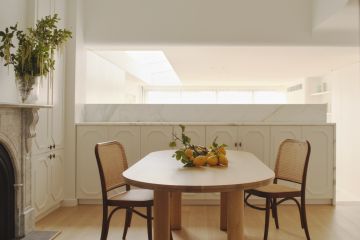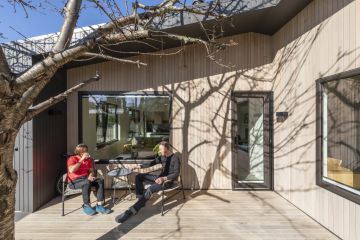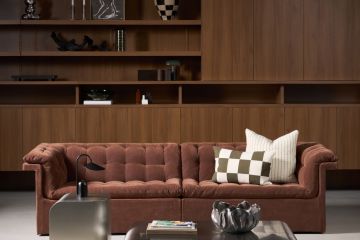What you need to know about using reclaimed or recycled timber in your renovation
When renovating and choosing flooring, most people would settle on carpet in the bedrooms, tiles in the bathrooms and floorboards in the living areas.
But, there’s a more sustainable, durable and charming option that can actually increase the value of your property too – reclaimed timber.
Character and memories
Recycled or reclaimed timber can be sourced from wool sheds, factories, wharves, piers, bridges and even railway sleepers around the country.
The weathering and drying process that the timber experiences over 100 or so years means it has more character and greater stability than new timber.

Recycled timber has a story to tell, sometimes leading to an emotional connection not seen in other building materials.
With wharves around Pyrmont and Darling Harbour being pulled down for redevelopment, Sydneysiders are purchasing the city’s past and laying it down on their floors. And it’s a similar story in Melbourne.
“It’s come from somewhere, it’s had a past life,” says Josh Alexander from Eco Timber Group in Melbourne.
“There are a lot of piers and wharves in Mornington Peninsular. [Renovators] may have caught their first fish off the Mornington pier, that might be a memory you associate with as a child that you’d like to have in your house on your floor.”

Types of recycled timber
Just like other housing materials, recycled timbers go in and out of fashion. For the past 10 years, the blond woods, such as blackbutt, tallowwood and Tasmania oak have been more popular.
“Tassie oak is an umbrella term for the mixed Victorian hardwoods. They’re like a mixed bag of lollies but a similar colour, so when you put them down they talk to each other without too much contrast,” says Alexander.
The darker redwoods like jarrah, red ironbark and Sydney bluegum are less practical as they show up dust and scratches. Also from an interior design point of view, the dominant colour can clash with other features in a room.
Sustainable doesn’t mean cheap
Recycled timber is obviously good for the environment, but people often make the mistake of thinking it’s inexpensive.
“Sometimes the recycled stuff can look good, but there’s a labour component in using it and the labour these days is more expensive than the material,” says architect Gary Windiate, from Windiate Architects.
“We used ironbark for timber flooring because it was on special, but it was so hard that it had to be pre-drilled.
“The big timbers that come out of piers and bridges have a lot of rusty old bolts and it’s hard to extract the metal out. We have to take the metal out before we put them through a saw. So that’s very labour-intensive.

“You also get a lot of waste with splits and cracks and all things associated with having a fairly aggressive life outside in the elements, such as freight trains driving on top of you for 100 years.”
If you’re planning on future renovations, matching the timber may be a challenge.
“We did a project a few years ago where one room’s floor had to be replaced,” says Windiate. “The client said ‘let’s do recycled Baltic pine’. They were going to charge twice the price of new Baltic pine, so the client just used new Baltic pine.”
The old Baltic pine flooring originally in the house had weathered and turned a darker golden appearance, whereas the new timber was a lot whiter. “In the end, they regretted it because it stood out,” says Windiate.
Rare and getting rarer
The weathering, nail holes, beetle larvae, knots and veins can’t be found in new timbers. These characteristics are sought after and eventually recycled timbers will more than likely run out as wooden structures such as bridges are now replaced with concrete and steel.
“In the next few years in my view, there’ll be a shortage. No doubt about it,” Alexander says.
We recommend
We thought you might like
States
Capital Cities
Capital Cities - Rentals
Popular Areas
Allhomes
More







